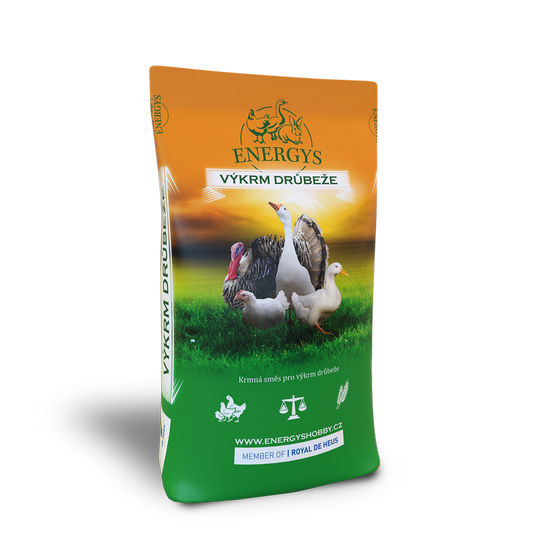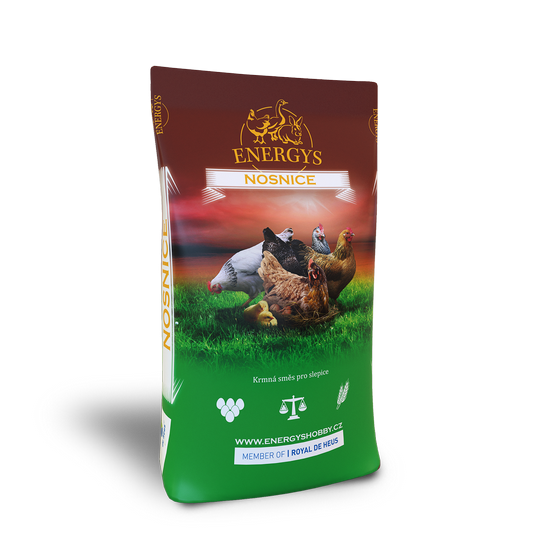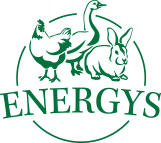Rabbits
Poultry
Laying hens
Quails
Guinea pigs
Pigs
Ostriches
Sheep and goats
Pigeons
Pheasants
Forest animals
Chicken farming methods
The domestic chicken, or hen, is one of the most important farm animals and provides benefits in the form of eggs and meat. Today, more and more emphasis is being placed on animal welfare. As a result, farmers are already starting to prepare for mandatory changes to the housing of laying hens. The following article is a simple summary of the housing systems used.
Farm housing systems
Battery cage
This system was developed in the second half of the last century. In the methodological manual entitled Welfare principles and new EU standards in poultry farms, published in 2004 by the Institute of Animal Science, a team of authors led by MVDr. Květoslav Košař assessed different technological systems for the production of eggs for consumption. The authors stated that conventional cages, in which the laying hen does not come into contact with droppings, is a technological system that is highly functional and minimises not only the negative factors affecting the performance of laying hens, but also the environment in the hall (emissions of harmful gases, including dust) and egg quality (physical and bacteriological contamination). The activity of the keepers consists mainly in checking the feeding and watering system and the health of the hens. A well-developed technological system can be operated by a keeper with minimal zootechnical knowledge.
However, efforts by activists and animal rights campaigners fighting for better farming conditions have resulted in a ban on the battery cage farming of laying hens in the EU. From 1 January 2027, laying hens on farms must be kept in aviaries or in halls on bedding, which can be combined with a paved covered run or outdoor run.
Free-run
Laying hens are kept in large groups in halls (with or without windows), in which a third of the floor area is litter (straw, shavings, sand). Feeding and watering is automatic through trough or circular feeders and dropper or cup drinkers. The laying nests are group nests with automatic collection, and are closed at night. Perches are located above a slatted floor. The advantage of this system is freedom of movement, which benefits the health and condition of the laying hens. By allowing natural behaviour patterns, the claw trimming issue is also solved. Providing an appropriate hall environment is technically easy to implement. It offers good working conditions with the option of using mechanisation to clear out bedding and droppings. Yet higher dust levels together with higher production of harmful gases and the possibility of direct contact with droppings increase the risk of infectious diseases. Keeping laying hens in large groups does not allow the creation of more stable social relationships, and this increases the risk of aggressive behaviour that can even lead to cannibalism. Furthermore, this housing system is demanding both in terms of maintaining the good condition of the bedding throughout the laying cycle and checking the health of the laying hens.
Aviary breeding
This is a combination of battery-cage and free-run breeding. As a rule, these are cage structures with two to four levels, in which feeders, drinkers, perches and laying nests are installed. There is bedding in the aisles between the rows of cage batteries. Droppings fall onto a belt conveyor through the slatted floor under each level, which carries them out of the hall. The laying nests have a sloping floor ensuring that the eggs roll onto a collecting belt, which is followed by a central conveyor that transports the eggs for sorting and marking. Regarding the advantages of this housing option, we should once again mention free movement with its positive effect on the health and condition of the laying hens. It also stimulates natural behaviour, preventing overgrown claws and reducing mechanical feather abrasion. The creation of an environment on several levels means laying hens have opportunities to escape from aggressive hens. However, it also has shortcomings. In particular because hens cannot create more stable social relationships in large groups, and this is also reflected in more frequent injuries, but also feather pecking, which can eventually lead to cannibalism. The movement of the hens also increases dust levels, which is not good for the birds or the staff. With large numbers of hens, it is more difficult to check their health.
Free-range
This is a variant of keeping laying hens on bedding or in aviaries combined with open-air runs. Shelters can also be installed on the sides of the halls, under which there is bedding. The run, to which the laying hens should have access all day, must also provide them with the opportunity to hide from the sun and predators. The installation of outdoor drinkers is a matter of course. As for the advantages of this housing system, exposure to the sun has a beneficial effect on the musculoskeletal system, bone strength and plumage quality of laying hens. Since some of the hens are always in the run, the environment in the halls is better as dust and harmful gas levels are reduced. However, it should also be taken into account that the risk of infectious and parasitic diseases increases in laying hens with the long-term use of runs. In addition, there may be higher losses of laying hens due to vermin and predators and, last but not least, the proportion of microbially contaminated eggs increases.
Mobile poultry houses
The reintroduction of mobile poultry houses for keeping laying hens may seem retro, but it has little in common with the classic type that disappeared in our country in the 1960s. The hen houses themselves are modern technological units that not only provide the poultry with proper comfort, but are also easy to operate and allow the hens to be kept on green stuff in the run at all times. However, it should be clarified that this concept is suitable for organic farmers who have agricultural land at their disposal.
As a rule, these poultry houses have two levels, with a droppings strip under the slatted floor on the level where the hens roost, drink and feed. From the upper level, the hens descend through a passage to the similarly-sized lower level, from where they can go through a door to the run. In an effort to maximise the mobility of the technological unit, everything is powered by electricity from solar panels located on the roof. Likewise, the opening and closing of the laying nests located in the ceiling is controlled via an electromagnet, thus preventing the hens from spending the night in the nests and polluting the bedding.
Each poultry house has a separate run, and each hen should have a minimum of four square metres of space. Electric mesh fences, powered by electricity from the poultry house, are used to fence off the run. Depending on the vegetation period, but especially the weather, laying hens should remain in one place from one to two weeks.
With increasing pressure to ensure well-being, farm housing systems are being developed and improved in Europe for all farm animals. In poultry farming, the barn environment is enriched with elements that extend the feeding behaviour of hens and thus reduce their aggressive behaviour, which inevitably occurs in large concentrations. For example, the Winter Garden and Rondeel technology systems, used by laying-hen breeders in the Netherlands, can be considered leading examples.
Home breeding
Keeping chickens in gardens and backyards is an increasingly popular trend. It offers not only fresh and tasty eggs for the kitchen, but also the opportunity to spend time with undemanding and friendly animals. If you are thinking about keeping chickens, it is important to familiarise yourself with the specific features and requirements in advance.
The basic condition for keeping hens is a suitable space. Hens need a coop that provides them with shelter from inclement weather and predators. The coop should be sufficiently large, the usual calculation being 1 m2 of floor space for four hens, while the more space for them, the better. Make sure there are no draughts in the coop! The basic equipment of a coop includes wooden perches with a diameter of about 5 cm, where the hens sleep. It is a good idea to place an easy-to-clean surface under the perches that enables droppings to be easily scraped off. Especially in winter, it is advisable to spread bedding on the floor of the coop – this can be wood shavings or straw. In addition, laying nests lined with hay, for example, are an essential part of a chicken coop, and should be placed on the opposite side from the entrance so that the hens have some peace. A nest size of 30 x 30 cm is recommended, but this depends on the breed. There must, of course, be a feeder and a drinker in the chicken coop. Here we recommend using hanging drinkers that are not in contact with the floor to reduce pollution of the water. A run where the hens can move freely and scratch in the ground is also important. The size of the run should be appropriate to the number of hens, with at least four square metres per hen.
The breeder’s activity includes cleaning the chicken coop and run, feeding, changing drinking water and other activities, all on a daily basis. However, it is now possible to buy breeding equipment on the market that allows the breeder to go away on holiday. This includes, for example, hopper feeders, barrel drinkers, automatic chicken coop doors, etc.
Related products

POULTRY UNI 30
A mashed concentrate for fattening of all categories of poultry, which includes the highest quality soja. It is mixed with cereals in a ratio of 20-40% (by type or phase of fattening). It contributes to fast growth and a high meat content. It does not contain coccidiostats.

LAYER REPRO
Granulated feed for laying hen breeds. Supports higher hatching rates and the successful development of the embryo. Higher content of chosen substances). The laying hen must have access to an adequate amount of potable water.

LAYER GOLD
Granulated feed for laying hens when laying. Supports high laying eggs with a solid shell and a beautiful yolk color. It follows the feeding of the Chicken MIDI mixture. Indicative feed consumption per 1 year ranges from 50-60 kg / piece.

LAYER KLASIK
A powered feeding mix intended for laying hens. With its rough shredded structure it contributes to maximum usability.

CHICKEN MIDI
From the 5th week to the end of the 20 week old chickens. It follows on from feeding with the Chicken MINI feed. Through its make up it helps in the correct development of the organism and with future high usability. It doesn’t contain coccidiostats. It is produced in two forms, granulated and powder.

CHICKEN MINI
A crumbled compound feed without anti-coccidiosides. Suitable for reared chickens of the laying hen type till the end of their 4 weeks of age. It contains a balanced ratio of nutrients supporting the correct development of chickens. For weaning chickens the following mix is CHICKEN MIDI.
